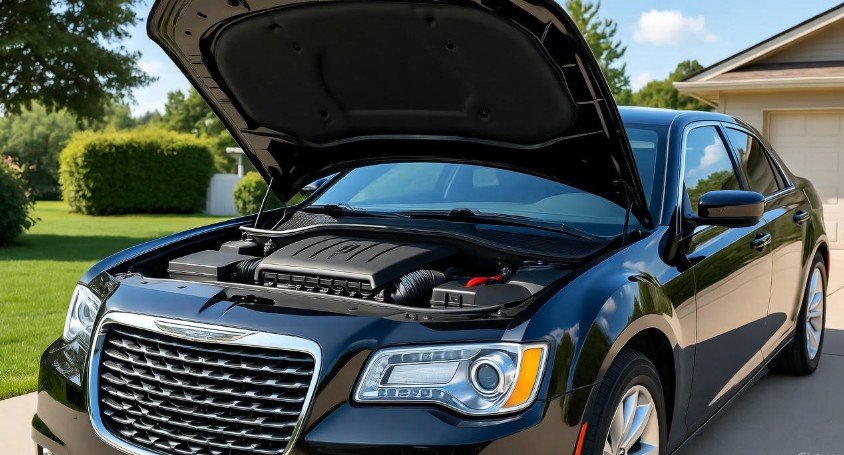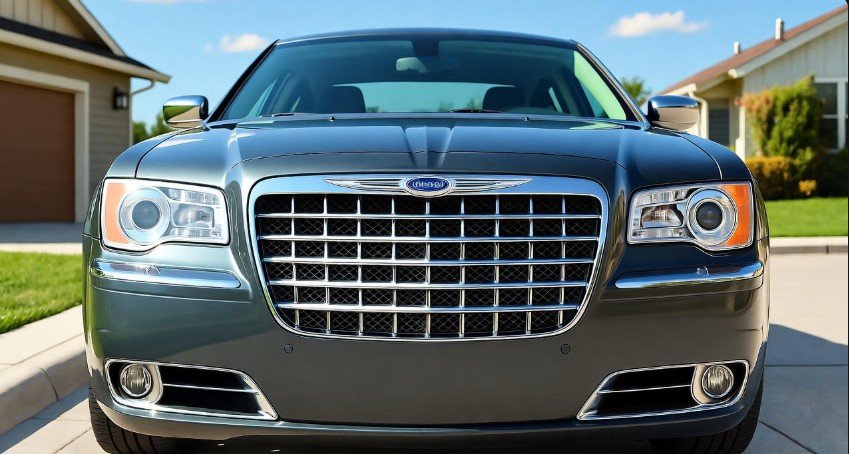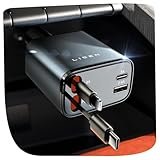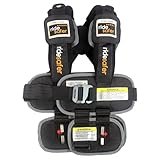Chrysler 300 Won’t Start But Has Power — Expert Fixes and Real-World Solutions

When your Chrysler 300 won’t start but has power, it can feel like a confusing riddle. You turn the key or press the start button — the dashboard lights up, the radio works, and even the headlights shine bright — yet the engine stays silent. It’s frustrating, especially when you have places to be. But don’t worry — you’re not alone. This issue is surprisingly common among Chrysler 300 owners, and the reasons behind it are often easier to fix than you might think.
In this article, we’ll explore every possible cause behind the problem, explain why it happens, and guide you step-by-step to get your Chrysler 300 running again. Whether it’s a faulty ignition switch, a weak fuel pump, or an electrical glitch, we’ll walk through the solutions in simple, friendly language. Let’s uncover what’s really going on under the hood and how to bring your Chrysler back to life.
In This Article
- 1 Understanding the “Chrysler 300 Won’t Start But Has Power” Problem
- 2 1. The Battery Has Power — But Is It Really Healthy?
- 3 2. Ignition Switch Failure — The Hidden Culprit
- 4 3. Starter Motor Problems — When the Engine Refuses to Turn Over
- 5 4. Fuel System Problems — When Power Isn’t the Issue
- 6 5. Security System or Key Fob Malfunction
- 7 6. The Role of Sensors and the Computer System
- 8 7. Electrical and Wiring Glitches
- 9 8. Advanced Troubleshooting — Going Beyond the Basics
- 10 9. The Silent Problem — Grounding and Corrosion Issues
- 11 10. When It’s the Starter Solenoid or Relay — The Small But Mighty Components
- 12 11. Weather-Related Starting Problems
- 13 12. Preventing Future Starting Problems
- 14 13. When to Seek Professional Help
- 15 14. Estimated Repair Costs (Average 2025 Prices)
- 16 15. Real-World Insight — Stories from Chrysler 300 Owners
- 17 16. FAQs About Chrysler 300 Won’t Start But Has Power
- 18 Conclusion — Bringing Your Chrysler 300 Back to Life
Understanding the “Chrysler 300 Won’t Start But Has Power” Problem

Imagine your car as a living system. The lights and electronics are like its heartbeat — showing signs of life — but if the engine doesn’t turn over, it’s like the lungs refusing to breathe. When your Chrysler 300 has power but won’t start, that means the electrical system is active, yet something in the ignition or fuel process isn’t working as it should.
This kind of issue can happen suddenly — maybe after parking overnight or following a short trip. You might hear a click when turning the key or pressing the start button, but the engine stays quiet. Or worse, you might hear nothing at all.
Here are some quick possibilities:
-
Battery terminals may look fine but have hidden corrosion.
-
Ignition switch could be failing internally.
-
Starter motor might be stuck or worn out.
-
Fuel system may not be delivering enough pressure.
-
Security system could be preventing the car from starting.
Each of these areas affects how your Chrysler starts. The good news is — with a bit of patience and troubleshooting, you can pinpoint the problem and fix it without unnecessary stress.
1. The Battery Has Power — But Is It Really Healthy?
It’s easy to assume that if the lights and radio work, the battery must be fine. However, that’s not always true. The Chrysler 300 needs significantly more power to start the engine than it does to run the interior electronics. So, while the lights may shine bright, the battery might not have enough strength to crank the engine.
Think of it this way: a flashlight might still glow with dying batteries, but it can’t power a big machine. Similarly, your Chrysler’s battery voltage might be too low for ignition, even though everything else seems normal.
Check these points first:
-
Measure voltage: Use a multimeter; a healthy battery should read 12.6 volts or higher.
-
Inspect terminals: Corrosion (a white or green powdery buildup) can block proper electrical flow.
-
Wiggle test: Sometimes, loose terminals cause intermittent contact.
-
Jump start test: If your car starts after a jump, your battery or alternator is the culprit.
If the battery is weak or old (typically over three years), replacing it can instantly solve the won’t start but has power issue. But if it’s fine, the problem lies elsewhere — let’s move on.
2. Ignition Switch Failure — The Hidden Culprit
One of the most overlooked yet common causes of the Chrysler 300 not starting is a faulty ignition switch. When you insert the key or press the start button, this component sends electrical power to critical systems — including the starter motor and fuel pump. If it fails, those systems won’t receive the necessary signal to start the engine.
Here’s a simple way to understand it: the ignition switch acts like a messenger. It tells your engine, “Hey, wake up!” But when that messenger is sick (damaged contacts, worn internals, or a bad circuit), the message never gets delivered — even if the dashboard lights up perfectly.
Symptoms of a failing ignition switch include:
-
Dashboard lights come on, but the engine doesn’t crank.
-
Accessories sometimes work, sometimes don’t.
-
No “click” sound when turning the key to start.
-
Jiggling the key or switch temporarily makes the car start.
If you notice any of these signs, have the ignition switch tested or replaced. It’s not an expensive fix compared to major engine work, and it can restore your Chrysler’s reliability immediately.
3. Starter Motor Problems — When the Engine Refuses to Turn Over
If your battery and ignition switch are both fine, but the engine won’t crank, your starter motor might be the problem. The starter is responsible for turning the engine over — it’s the first mechanical motion before combustion begins.
Over time, the starter can wear out, especially if your vehicle has high mileage. It might produce a single click when you turn the key or make a grinding noise. In some cases, it stays completely silent.
Signs your starter motor is failing:
-
A clicking sound but no crank.
-
Smoke or burning smell from the engine bay (indicating overheating).
-
The car occasionally starts after tapping the starter gently with a wrench — a classic symptom of a worn-out starter solenoid.
If your Chrysler 300 won’t start but has power, testing the starter is essential. Mechanics can run a starter draw test to measure current flow. If it draws too much current or none at all, replacement is necessary.
Pro tip: Always ensure the battery is strong before replacing the starter. A weak battery can mimic starter failure symptoms.
4. Fuel System Problems — When Power Isn’t the Issue
Even if your electrical system works perfectly, your Chrysler 300 won’t start if the engine isn’t getting the right amount of fuel. The fuel pump, fuel filter, or fuel injectors could be responsible.
Imagine trying to light a fire without enough fuel — the spark might be there, but there’s nothing to ignite. That’s exactly what happens when your car’s fuel system fails.
Here’s how to troubleshoot:
-
Listen for the fuel pump: When you turn the ignition to “ON,” you should hear a faint humming sound from the rear. If it’s silent, your fuel pump may be dead.
-
Check fuel pressure: A mechanic can attach a pressure gauge; low pressure means the pump or filter is clogged.
-
Replace the fuel filter: Over time, dirt and debris block fuel flow.
-
Inspect injectors: Clogged or leaking injectors can prevent proper combustion.
Common symptoms of fuel-related no-start issues:
| Symptom | Likely Cause |
|---|---|
| Engine cranks but doesn’t fire | Weak fuel pump or clogged filter |
| Engine starts then stalls | Fuel injectors malfunction |
| No fuel smell from exhaust during crank | Fuel not reaching cylinders |
Addressing the fuel system is crucial because it directly affects engine health and performance. A clean, pressurized fuel system ensures smooth ignition every time.
5. Security System or Key Fob Malfunction
Modern Chrysler 300 models come equipped with advanced anti-theft systems. While these features are designed to protect your car, they can sometimes prevent it from starting — even if everything else seems fine.
If the immobilizer system doesn’t recognize your key fob, it can block the starter and fuel system from activating. This can lead to the “has power but won’t start” situation.
Try these quick checks:
-
Replace your key fob battery — a weak fob battery can cause signal issues.
-
Use a spare key fob if you have one.
-
Watch for the security light on the dashboard. If it stays on or flashes, the immobilizer has detected an error.
If this happens, resetting the system may help. Disconnect the battery for 10 minutes, then reconnect. If the problem persists, a dealer can reprogram your key fob.
6. The Role of Sensors and the Computer System
The Chrysler 300 uses multiple sensors — like the crankshaft and camshaft position sensors — to control timing and ignition. If one of these sensors fails, the engine won’t start even though you have power.
These sensors act like the car’s nervous system. They tell the computer (ECU) exactly when to fire the spark plugs and inject fuel. Without accurate signals, the ECU can’t coordinate the startup process.
Common signs of sensor failure include:
-
No-start condition even with full battery.
-
“Check Engine” light illuminated.
-
Engine cranks but doesn’t fire up.
-
Intermittent stalling before the final no-start.
If you suspect a sensor issue, you can scan the vehicle for error codes using an OBD-II scanner. Codes like P0335 (Crankshaft Position Sensor) or P0340 (Camshaft Position Sensor) confirm the problem. Replacing these sensors is relatively affordable and can instantly fix the issue.
7. Electrical and Wiring Glitches
Sometimes, the cause isn’t a component — it’s the wiring that connects everything. Modern vehicles, including the Chrysler 300, rely on complex electrical networks. A loose wire, corroded connector, or damaged ground strap can interrupt the circuit, leading to a no-start condition.
In humid climates, moisture buildup or rodent damage under the hood can also cause short circuits or chewed wires.
What to check:
-
Battery ground cable (make sure it’s tight and clean).
-
Starter and alternator wiring connections.
-
Fuse box for blown fuses related to ignition or fuel.
-
Relay clicks (the starter relay should make a faint sound).
If all visual checks look fine but the issue remains, an auto electrician can perform a continuity test to identify broken circuits.
✅ Before You Go Further — Quick Troubleshooting Checklist
If your Chrysler 300 won’t start but has power, go through this quick sequence first:
-
Check the battery voltage (should be 12.6V or higher).
-
Inspect terminals for corrosion or looseness.
-
Listen for the fuel pump when ignition is ON.
-
Look for dashboard warning lights (especially the security indicator).
-
Try jump-starting to rule out weak battery.
-
Scan for diagnostic codes using an OBD-II tool.
Doing these steps can often narrow down the issue before you spend money at a repair shop.
8. Advanced Troubleshooting — Going Beyond the Basics
If you’ve already checked the basics — battery, starter, fuel, ignition — and your Chrysler 300 won’t start but has power, then it’s time to dig deeper. Sometimes the issue hides within components that work together behind the scenes, like the ECU, relays, or ground circuits. Think of these parts as the “nervous system” of your car. When even one wire or relay misfires, everything else can go haywire.
Start by checking the starter relay in the fuse box under the hood. Swap it temporarily with another identical relay (like the horn relay) to test whether the starter engages. If the car starts, you’ve found the problem — replace the relay.
Next, inspect the neutral safety switch (also known as the park/neutral position sensor). If this switch fails, your Chrysler won’t start because it can’t detect that the gear lever is in “Park” or “Neutral.” Try shifting between gears while pressing the brake and attempt to start. If it starts in one position but not another, the switch is faulty.
Another area worth exploring is the engine control module (ECM). A software glitch or damaged circuit within the ECM can interrupt the ignition sequence. Sometimes, disconnecting the battery for 15 minutes resets the system and clears minor errors. But if the ECM is physically damaged, professional repair or replacement is required.
9. The Silent Problem — Grounding and Corrosion Issues
A poor ground connection can mimic almost any electrical issue in a car. The Chrysler 300, with its complex wiring, is especially sensitive to grounding problems. Even if your battery is perfect, a bad ground strap can stop your car from starting.
Picture electricity like water flowing through pipes. If one pipe is blocked, the flow stops — no matter how full the tank is. Similarly, corrosion on a ground connection prevents proper current flow between the battery and engine.
To check for grounding issues:
-
Inspect the negative cable from the battery to the chassis.
-
Make sure the connection to the engine block is clean and tight.
-
Remove rust or corrosion using sandpaper or a wire brush.
-
Add a small layer of dielectric grease to prevent future buildup.
Restoring proper grounding often revives an otherwise “dead” Chrysler 300 in minutes.
10. When It’s the Starter Solenoid or Relay — The Small But Mighty Components
Sometimes, the starter motor itself isn’t bad, but the starter solenoid — the small cylinder attached to it — fails to transmit current. The solenoid acts as a bridge between your ignition switch and starter motor. When you turn the key, it pushes a gear into place and allows electricity to flow to the motor.
A faulty solenoid can cause the clicking noise many Chrysler 300 owners describe when the car won’t start.
Symptoms of solenoid issues:
-
A single click when turning the key.
-
Engine doesn’t crank at all.
-
Occasional successful starts after several attempts.
Replacing the solenoid alone (if detachable) is cheaper than replacing the entire starter assembly. However, in most modern Chrysler 300 models, the solenoid is built into the starter motor, so the whole unit needs replacement.
11. Weather-Related Starting Problems
Believe it or not, weather can play a big role in why your Chrysler 300 won’t start but has power. In cold conditions, oil thickens, batteries lose efficiency, and metal components contract — all of which increase the strain on your starter system.
If your Chrysler struggles to start only in the cold, the following might help:
-
Use a battery warmer or engine block heater during freezing nights.
-
Switch to synthetic oil with a lower viscosity for winter months.
-
Keep your fuel tank at least half full to prevent moisture from freezing in the lines.
Conversely, extreme heat can cause vapor lock or battery fluid evaporation, especially in older batteries. So, seasonal maintenance — like checking fluid levels and replacing old batteries — can save you from surprise no-start mornings.
12. Preventing Future Starting Problems
Once you’ve fixed the issue, it’s crucial to keep it from happening again. The Chrysler 300 is known for smooth performance, but like all vehicles, it needs consistent care. Think of prevention as the key to long-term peace of mind.
Here’s how you can prevent future “won’t start but has power” problems:
Regular maintenance tips:
-
Clean battery terminals every 6 months.
-
Replace spark plugs and filters as recommended.
-
Inspect wiring harnesses for damage or corrosion.
-
Keep your ECU software updated (dealerships offer updates during routine service).
-
Don’t ignore small warning lights or delayed cranking — they often signal early trouble.
Pro tip: Always listen to your car. Slow cranks, dimming lights, or faint fuel pump sounds are your Chrysler’s way of asking for attention. Addressing these signs early prevents costly repairs later.
13. When to Seek Professional Help
While it’s satisfying to fix small problems yourself, there are times when it’s better to leave things to the experts. If you’ve tested the battery, starter, ignition, and fuel system, yet the Chrysler 300 still won’t start, then you may be facing a deeper electrical or ECU problem.
Professional mechanics have advanced diagnostic tools that can read hidden codes, test circuits under load, and pinpoint issues that aren’t visible to the naked eye. They can also reprogram your car’s computer, reset the immobilizer, or update firmware that may be causing the fault.
Situations where professional help is essential:
-
The security light won’t turn off after resetting.
-
No diagnostic codes appear, but the engine still won’t crank.
-
Electrical burning smell or visible wiring damage.
-
Starter engages but grinds against the flywheel (indicating misalignment).
A certified technician can save time and prevent accidental damage from incorrect DIY attempts.
14. Estimated Repair Costs (Average 2025 Prices)
Understanding potential costs helps you plan better. Depending on the cause, fixing a Chrysler 300 that won’t start but has power can range from inexpensive to moderate.
| Problem | Estimated Repair Cost |
|---|---|
| Battery Replacement | $150 – $250 |
| Ignition Switch Replacement | $200 – $400 |
| Starter Motor Replacement | $300 – $600 |
| Fuel Pump Replacement | $500 – $900 |
| Crankshaft/Camshaft Sensor Replacement | $150 – $300 |
| ECU/Computer Reprogramming | $100 – $250 |
These are general estimates and can vary by region or mechanic. But in most cases, the fix is straightforward and doesn’t require a full-day workshop visit.
15. Real-World Insight — Stories from Chrysler 300 Owners
Many Chrysler 300 owners have faced this same headache. In forums and community groups, you’ll find stories of people stranded in parking lots, only to discover later it was something as small as a corroded terminal or a blown relay.
One owner shared that after weeks of frustration, they found a hidden ground wire near the transmission that had rusted through. Replacing that small cable made the car start perfectly again. Another said a simple ignition switch swap fixed months of random no-start issues.
The takeaway? Sometimes, the problem looks major but isn’t. A bit of observation, patience, and simple maintenance can make your Chrysler roar back to life.
16. FAQs About Chrysler 300 Won’t Start But Has Power
Q1. Why does my Chrysler 300 click but not start?
That single click usually means the starter solenoid is receiving power but the motor isn’t engaging. This can be due to a weak battery, bad starter, or corroded connection.
Q2. Can the alternator cause a “won’t start but has power” issue?
Yes. If the alternator fails, the battery doesn’t recharge properly. Eventually, it loses enough power that it can’t crank the engine, even though accessories still work.
Q3. My Chrysler 300 has power, but the starter doesn’t engage — what now?
Check the starter relay, ignition switch, and ground connections. Also, verify the gear selector is in “Park” or “Neutral.”
Q4. Can a bad key fob battery prevent starting?
Absolutely. The immobilizer system might not detect a weak fob signal, locking out the ignition system. Replace the fob battery and try again.
Q5. How can I tell if the fuel pump is working?
Turn the ignition to ON and listen for a faint humming sound from the rear. Silence usually means the pump isn’t running or the relay is faulty.
Q6. What should I do if my Chrysler 300 starts sometimes but not always?
That points to intermittent electrical failure — possibly a failing ignition switch, starter solenoid, or corroded connector. Have it checked before it worsens.
Q7. Is it safe to drive after jump-starting if it runs fine afterward?
If it starts after a jump, your alternator might be charging fine, but your battery is weak. Replace the battery soon to avoid getting stranded again.
Q8. Can extreme cold or heat cause this issue?
Yes. Cold weather reduces battery output, while extreme heat can cause vapor lock or evaporate essential fluids. Seasonal maintenance helps prevent this.
Conclusion — Bringing Your Chrysler 300 Back to Life
When your Chrysler 300 won’t start but has power, it’s not the end of the road — it’s a signal. The car is telling you something is off, whether it’s the ignition switch, starter, battery, or a tiny wire. Most of the time, the fix is straightforward once you identify the root cause.
Remember: start with the basics — battery health, clean terminals, working relays — before assuming the worst. Many Chrysler owners find that small, overlooked components are the real culprits.
Your Chrysler 300 is a powerful, refined machine built for smooth performance. With a little patience, diagnostic effort, and care, you can get it back on the road — stronger than ever. So the next time your car lights up but stays silent, stay calm. The power is there; you just need to reconnect the dots.





